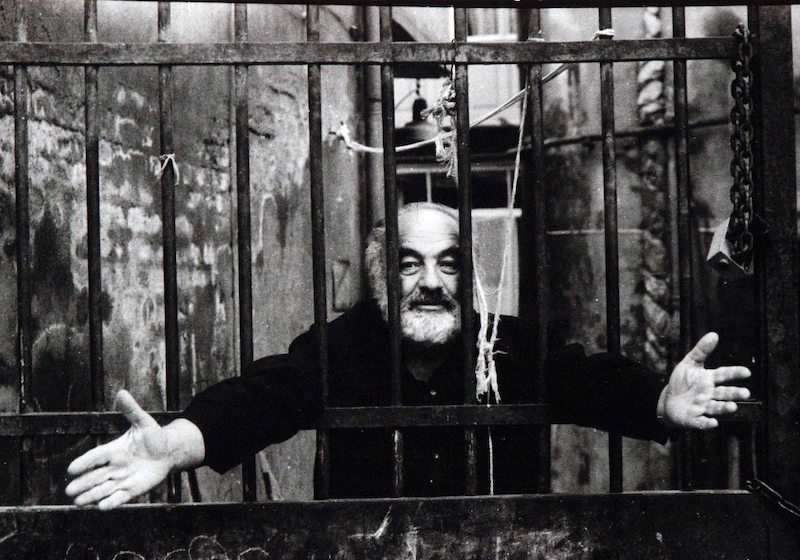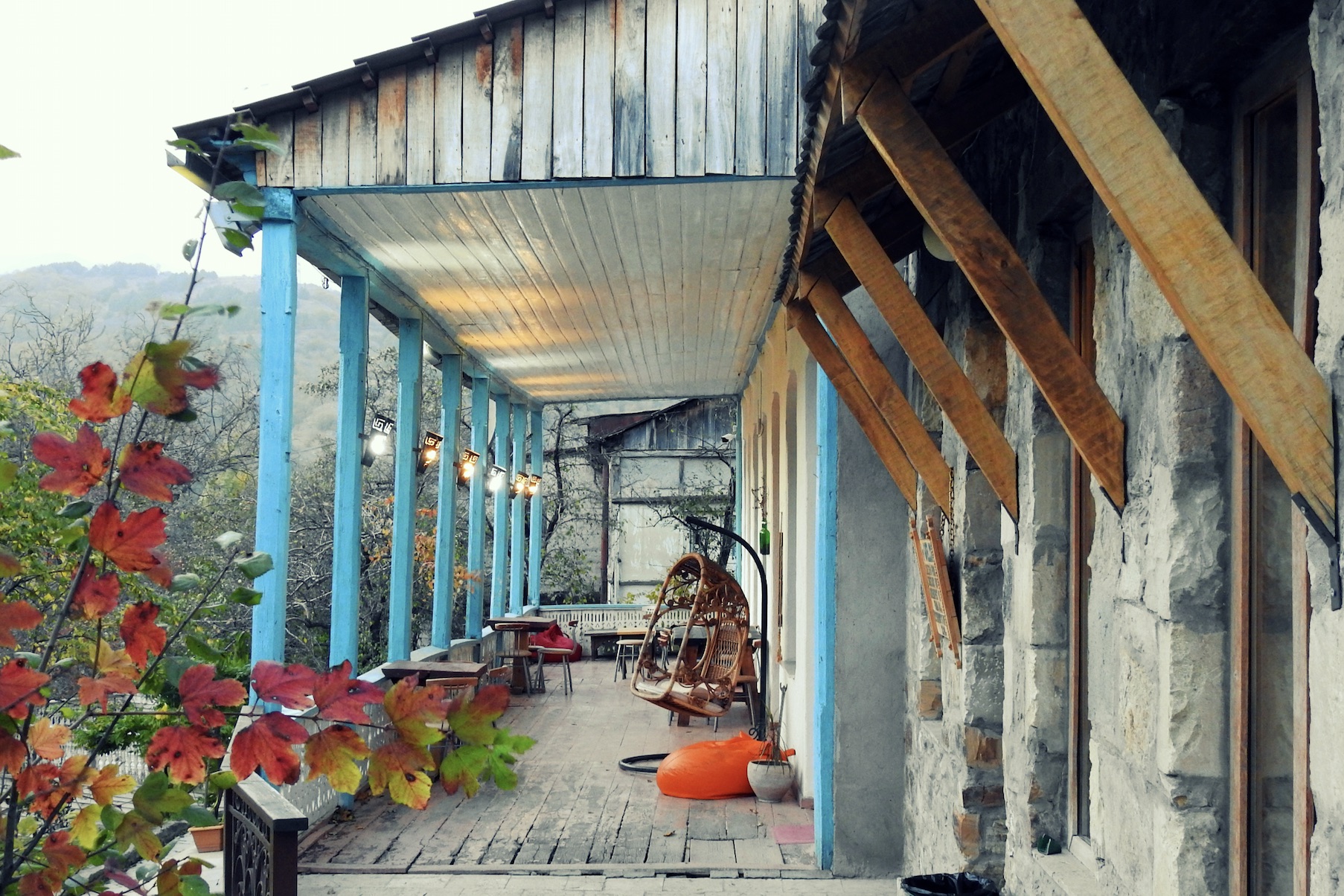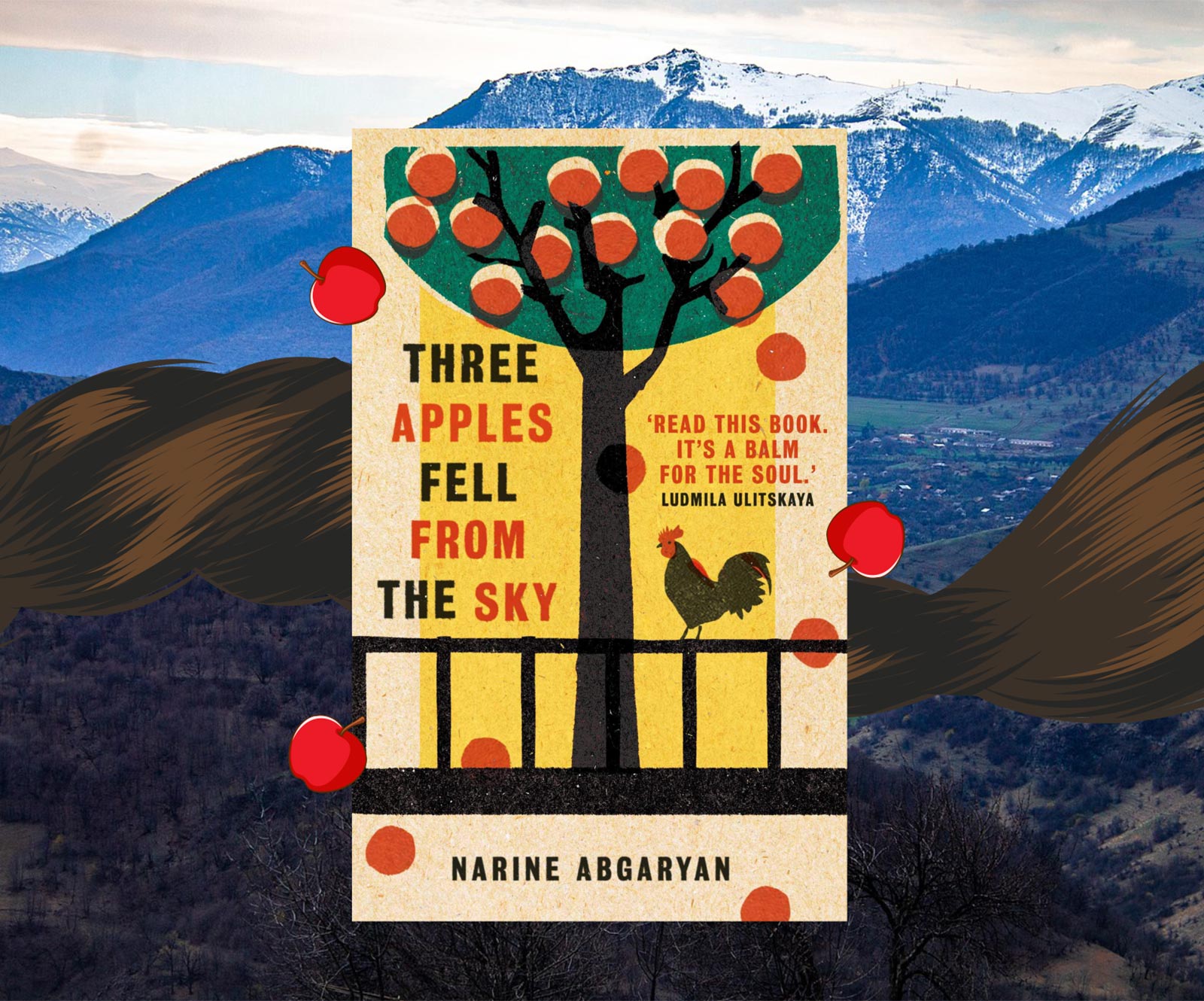My dear Parajanov: what Armenia’s greatest auteur taught me about creativity during quarantine

The world celebrates Armenia's Sergei Parajanov for his pioneering work on film — but amid the Covid-19 lockdown, it is his art produced from the confines of the gulag which has inspired New York City based writer Lilit Markosian most of all.
Three black and white photographs hung in my childhood home. One was of my mother as a teenager. Another was of a monkey with a mohawk, which my father clipped from a Soviet magazine in the 1980s because he thought it was cute. The third was a portrait of artist and filmmaker Sergei Parajanov. The photograph showed him holding a torn picture of his father’s face against his own. The father’s features replaced the son’s nose, mouth, and left eye, forming a slightly disfigured face. At first glance, it was unclear where one countenance began and the other ended; the image cut through time, blending generations and bodies.
Parajanov’s presence has been steady in my life, a bearded guardian angel looking over my shoulder. As Soviet immigrants to California, my parents admired his work, which helped define modern Armenian culture and identity. We frequently watched his films growing up, and visited his Yerevan museum. I still keep a Parajanov photograph by my bedroom door. This portrait is simpler than the one that hung in my parents’ workroom. Turned at a three-quarter angle with slightly raised eyebrows, Parajanov’s face fills the frame. He’s jovial and imperious, eyeing his viewer with a coquettish look, little patches of dark hair shading his cheeks. His photograph rests in my New York City bedroom while I sit here in Cambridge, Massachusetts, but the man is on my mind.
Parajanov created and lived freely, as if the system was not prepared to pounce on his imaginative whims
Creating in quarantine is difficult. Confined to a one-bedroom apartment with two other adults and a dog, I sleep on a couch and live out of a carry-on suitcase. The setting is comfortable enough, but not ideal for productivity. Anxious about loved ones on distant continents and closed borders that keep me from them, I struggle to keep up with assignments. Writer’s block has set in, concentration evaporated. Giving shape to amorphous days is challenging when mornings are filled with alarming news and evenings with addled debate. In a period of chronic gloom and inertia, I look to Parajanov. For years, he was simply there, a strange man on the wall, next to mom and the monkey. Now I rifle through his letters and images seeking kernels of guidance.
My favorite Parajanov artwork, bar none, is “Fate of the Eastern Woman.” The sculpture is plain, a high-heeled leather shoe sitting inside a grimy wood-and-wire cage. When I discovered the piece in the Parajanov Museum in Yerevan, its absurd mockery delighted me. I was working in Armenia at the time, and the piece perfectly expressed the feeling of being in a country where men follow you home from the street and never shake your hand in the office. Parajanov’s eastern vision has long held a special place in my heart. But in recent weeks, as Covid-19 consumes all life, the artwork has gained new meaning; quarantine is making me feel a little like a sad, caged-up shoe.
Parajanov is not widely known for his sculptures or found-object mosaics. His films are his crowning achievement, earning him global acclaim as an avant garde master. But Parajanov did not see as much success during his lifetime. The Soviet authorities persecuted him for years, offended by his irreverence. In a period when socialist realism was the only approved art form in the USSR, Parajanov’s work was radical. While some creations, like “Fate of the Eastern Woman,” speak to everyday struggle, others outstrip the earthly realm, weaving together mythology, spirituality, and ethnography.
Every still from a Parajanov film is like a painting. The Colour of Pomegranates, his most famous production, released in 1969, shows a sequence of Armenian miniatures come to life. Fruit, shells, blood, horsemen, silk, and ink form kaleidoscopic compositions on the screen. There is little dialogue and minimal music. When I watched it for the first time, a mere child, I was disturbed by its pervading quiet. It seemed to me Parajanov was trying to unlock some secret, primordial message.
Daring bolstered Parajanov’s singular artistry. Born in Tbilisi to Armenian parents and later moving to Moscow, Kyiv, and Yerevan, the filmmaker existed between languages and cultures. He created and lived freely, as if the system was not prepared to pounce on his imaginative whims in a flash. His portrait hung in our home as a stark reminder. Having lived through the Soviet Union’s collapse, my parents never let their children forget systems are rarely as strong as they appear. Security disappears in the blink of an eye. So look beyond the image, like Parajanov, who lived as if convention and expectation were nothing.
Parajanov’s defiant creativity and sexuality (the artist was bisexual, though he may not have used that word) led to two arrests within a decade. The first and most severe punishment came in 1973, when he was convicted on falsified charges of rape and dissemination of pornography. Despite protest from Soviet and global artistic communities, Parajanov was sentenced to five years of Siberian hard labour. Biographers suggest officials believed he was too weak, physically and psychologically, to survive the sentence.
But Parajanov was resilient. Like many of his peers, he created iconic work in the gulag. Using scavenged labels and lids, copper wire, thread, and aluminum foil, Parajanov made gawky sculptures and dolls. He illustrated prison life with ball-point pens, mythologising his fellow inmates as grotesque and hairy men suspicious of the pensive creative. Once officials discovered Parajanov was thriving, they began moving him from one camp to another, hoping increasingly severe conditions would drive the robust, daydreaming artist to suicide.
As far as I know, crisis-bound creatives are useful in only one way. When things fall apart, we can provide reflection, escape, or a reminder of beauty amidst the dark.
Thinking of lonely Parajanov, sketching on his gulag cot, is heartbreaking. I wonder if this is where he first conceived his shoe-in-a-cage masterpiece; it’s possible many of his best ideas were born from constraint. Yet I find great vitality in the artist’s work-camp letters. “It’s winter, damp and disgusting and nevertheless beautiful,” he wrote to his wife, Svetlana Scherbatyuk. “Enjoy yourselves as much as possible, as I used to do. I have something to remember.” These affirming messages arrive across time and space, providing calm at a tense moment. Parajanov has many gifts to offer the artist or writer stuck in confinement.
Quarantine is, evidently, nothing like the gulag. By all conceivable measures, the latter was infinitely worse. As far as I know, crisis-bound creatives are useful in only one way. When things fall apart, we can provide reflection, escape, or a reminder of beauty amidst the dark. Most artists experience some version of this within their lifetimes. I am a soft egg, while Parajanov suffered brutalities that hardened him, much like they did my grandparents. Still, I take a moment to reflect and ask: dearest Sergei, what to do? How can I fill blank pages and long hours when I ache to go outside, hug a stranger, and never sit still again?
Parajanov poses near his Mona Lisa series at a 1990 exhibition in Yerevan, Armenia. Image: Zaven Sargsyan, director of the Parajanov Museum.
Parajanov tells me, no matter how grim the setting, there is always joy in the details. In his biography, he describes an icy gulag day. “The inmates pissed in the bitter cold. Everything was caught by the frost and multicolored. Those who suffered from nephritis pissed green, those who were beaten badly — red, and those who drank chifir pissed in orange. Everything is sparkling in the sunlight! Tremendous beauty!” Parajanov almost giggles at the grotesque memory. Laughter must have been a powerful salve.
In another interview, he reveals one of his masterpieces’ comical origins. On a hot day, Parajanov labored with shirtless convicts and noticed an inmate’s shoulder tattoo of La Gioconda. “When he lifted his hands, the skin stretched and La Gioconda started laughing; when he bent, she became serious; and when he scratched himself behind the ear, she winked. She continuously made funny faces.” Inspired by laughing ink, Parajanov asked friends to send him Mona Lisa reproductions. He tore apart these images to create a mystical collage series, which he later exhibited in oddly-shaped rococo frames painted gold. From a moment of enslavement, an angelic display was born.
Whether confined to the gulag or comfortable at home, Parajanov deciphered constant beauty from his environment. His wife Svetlana described him as someone who emphatically erased the mundane. “He knew only too well what the monotonous grey routine meant. I think that his mission on Earth was in turning everyday life into a continuous celebration.” This is best expressed by a photograph reproduced at infinitum on book covers and festival brochures across the Eastern Bloc. It shows a stout Parajanov, arms spread wide like an airplane, running down a narrow Tbilisi street, flying like a child.
Flying by Yuri Mechitov, photographed in Tbilisi in 1981. Image courtesy of the Parajanov Museum in Yerevan.
If asked to craft a message for troubled creators, Parajanov would say ignore the cage and, if you can’t, gild it with the fruits of your fantasy. As I type, I imagine Parajanov sitting in a cozy Tbilisi apartment drinking coffee, seltzer on the side, beret on his head. He gesticulates vigorously while insisting art is truth interpreted through the creator’s eyes. Or maybe he’s writing letters to a friend in better times. If he were speaking to us now, Parajanov might sign off like he did when writing to his wife Svetlana on December 24, 1977, four years into his first gulag sentence. Slowly losing hope and aware they were moving him to induce suicide, Parajanov signed his letter:
Kissing you,
Sergei
Don’t panic, everything will be alright.
Six days later, he was released.


